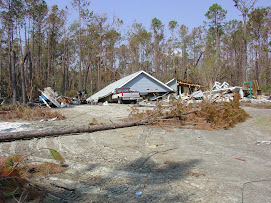…other side of the Pacific that is.
Although large natural disasters outside of the United States are often associated with “less developed” nations needing our help, the reality is that a variety of disasters do strike within the 1st world economies. The European heat wave of 2003 has been estimated to have killed 14, 800 Frenchmen alone, and the Kobe earthquake of 1993 killed 5,100 people in an area of the country thought to be relatively safe from severe earthquakes.
I did run across an interesting piece that described US Government issued flood insurance policy with the earthquake insurance issued by the Japanese government.
“Insurance Issues of Catastrophic Disasters in Japan: Lessons from the 2005 Hurricane Katrina Disaster” written by Hiroaki Tsubokawa. 
What is interesting is that there are so many parallels between the two countries responses to the threat of large scale catastrophe.
Both countries offer government funded catastrophe insurance, and in both countries insurance is taken only by a limited group of people.
In the US, the National Flood Insurance Program (NFIP), 41% (2,181,930) of policies are issued in Florida (as of April 2007), followed by Texas, and then Louisiana. Given that Florida has 7.05 million households (per the US census), even if only half of them are non-renters, that would put flood insurance ownership by home owners at 62%.
In Japan, the number also varies by region, but nationwide 38% of insurance policy holders have earthquake insurance.
In both countries the lack of participation drives up the cost of insurance. At the time of this study the average NFIP annual premium was $438: very high with respect to its limited benefits. One reason (though not the only one) benefits are limited is that it helps keep the premiums down. Japan actually caps the total amount that will be paid out across the country and in any case they limit the payout on earthquake insurance to ½ the value of the underlying fire insurance policy. What is also interesting is that after the Kobe earth quake, they had a large battle between the insurers and insured because fire insurance did not cover earthquake damage: yet many building burned down as a secondary effect of the earthquake.

Much of the Japanese reaction was somewhat similar to the US. They discussed more national funding of insurance policies to take care of disaster situations, and they became much more interested in accurately mapping out a natural hazard map. It is not clear from this paper that they did anything much more concrete.

No comments:
Post a Comment